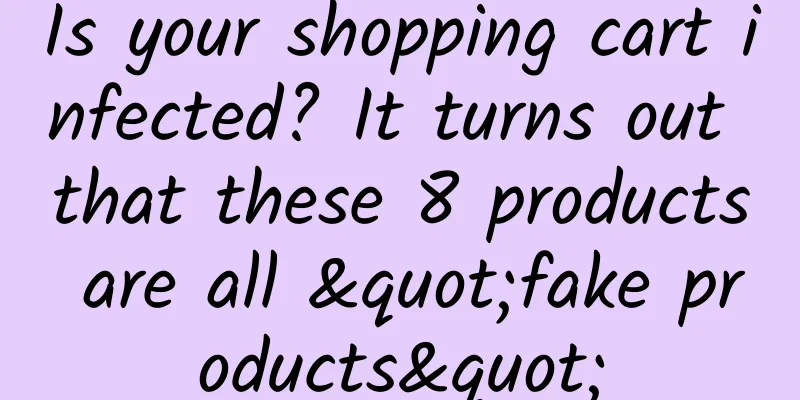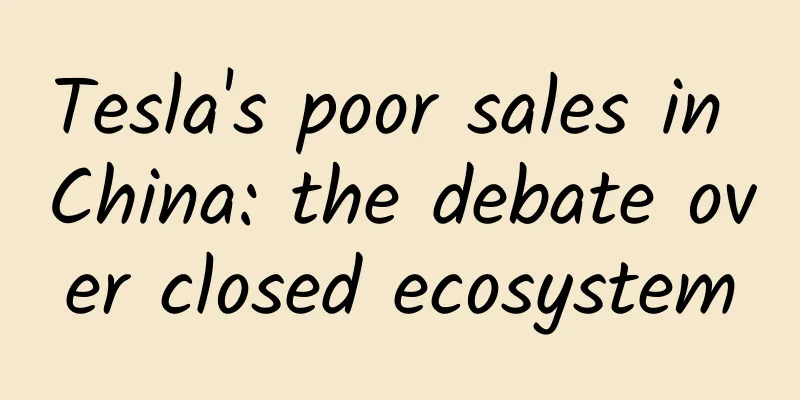Is your shopping cart infected? It turns out that these 8 products are all "fake products"

|
Feeling the convenience brought by “use and throw away”, disposable items are appearing more and more frequently in our lives, and their prices are becoming cheaper and cheaper. They may be “rounded off to free”, or even “come at no cost” like plastic bags in supermarkets, which seems to be a good choice for a convenient life. It is easy to find cheap things, but whether they are good or not requires careful judgment. As an old stockpiler during shopping festivals, I have absorbed two years of environmental health knowledge and made a small inventory to help you avoid the minefield of disposable products that are disguised as cheap but actually increase the cost of our health. 1. Fake baby 1: plastic wrap Meat, vegetables, fruits and melons “bound by plastic” (Photo source: Internet) Plastic wrap is a tool used by many families to refrigerate food to prevent it from tainting odors or spoiling. Many large supermarkets and community fresh food stores also use plastic trays + plastic wrap to package meat or cooked food, which looks neat and hygienic. Because the unit price is not expensive, plastic wrap usually appears in the shopping cart as a "complementary item" to fulfill our desire for discounts. In the second half of 2020 alone, nearly 80 million Chinese people used at least one roll of plastic film[1]. However, due to various reasons such as difficulty in recycling, used plastic wrap has basically become “disposable” and has no chance of being re-used. "Last year" in the picture refers to 2020 (Source: Jinsubao) Discarded plastic wrap may be incinerated to produce highly carcinogenic dioxins, or be landfilled in a landfill to wait for hundreds of years to degrade, or it may drift into the sea or even continue to torture itself in the stomach of a fish. In addition to environmental pollution, a point that is more closely related to everyone's health is that when plastic wrap comes into direct contact with food, will some bad things sneak into our food? Commercial cling film is usually made of polyvinyl chloride (PVC), and common household cling film is usually made of polyethylene (PE). Phthalates (PAEs) are widely used plasticizers. Their main harm is that they may cause feminization of boys and precocious puberty in girls. They may also be associated with reproductive dysfunction, tumors of the reproductive and endocrine systems, and damage to the development and function of the nervous system. [3] Compared with PVC cling film, the raw materials of household food-grade PE cling film are less dependent on plasticizers and are relatively safer, but they have the risk of polycyclic aromatic hydrocarbons (PAHs). PAHs are a general term for more than 100 polycyclic chemical structures, of which 16 PAHs are considered to be highly carcinogenic. A study conducted by the Jiangxi Provincial Food Inspection and Testing Institute using food-grade PE cling film as the research object showed that: Dissolution of polycyclic aromatic hydrocarbons (PAHs) It increases as the acidity of the contact material increases. [4] Dissolution of polycyclic aromatic hydrocarbons (PAHs) Increases with increasing ethanol content of the contact material [4] Migration of polycyclic aromatic hydrocarbons (PAHs) It increases with the increase of temperature. When the temperature is higher than 70℃, the migration amount of PAHs increases suddenly [4] Dissolution concentration of polycyclic aromatic hydrocarbons (PAHs) It also increases with the duration of contact.[4] In addition, the order of solubility of PAHs in the exposed objects is: high-fat food > acidic food > ethanol > pure water matrix. Whether it is PVC cling film or PE cling film, both contain harmful substances that increase the risk and probability of human disease. Therefore, saying that PE cling film is relatively safer is just "picking a general from a group of dwarfs". 2. Fake baby 2: wet "paper" towel I used to be like many of my friends. After eating crayfish, I would ask my sister, "Do you have a wet wipe? Give me one." From our perspective and "assumptions", wet wipes = "wet tissues". However, just like there is no fish in the fish-flavored pork shreds, there is no paper in the "wet wipes". But the fish-flavored pork shreds do contain meat, while some wet wipes are made of plastic . Plastic microfibers that enter the environment due to shedding and degradation will cause continuous harm to different ecosystems. At the same time, they may enter the human body through the food chain because “big fish eat small fish, and small fish eat shrimp”. On the other hand, the negative impact of microplastics on human health has also been continuously confirmed [6]. However, if the "wet" in the wet wipes contains skin-sensitizing ingredients, it can easily cause skin irritation, which would make anyone unable to sit still. In 2019, Consumer Reports, a product evaluation media, conducted a comparative evaluation of 7 types of sanitary wipes on the market and found that the concentration of benzalkonium chloride detected in Dettol sanitary wipes exceeded the EU standard and may be irritating. The Environmental Working Group (EWG) of the United States considers benzalkonium chloride to be a particularly dangerous sensitizer for patients with asthma, eczema and other skin diseases. Comparative evaluation of the active ingredients of 7 sanitary wipes on the market in 2019 (Source: Consumer Reports) 3. Fake baby number three: sanitary napkins I believe that major shopping festivals are a good time for many sisters to stock up on sanitary napkins. Being able to buy a sanitary napkin that feels comfortable on the skin can really be considered a "lucky little thing." But then again, if we are allergic to a certain type of sanitary napkin, does it mean that our skin is too sensitive? No, sanitary napkins contain formaldehyde, which is also a possible cause of allergic reactions. Formaldehyde can enter the human body through contact, breathing, and eating, causing serious damage to multiple organs such as the lungs. It can also cause itching, congestion, papules, rashes, and allergic reactions on the skin. The higher the formaldehyde residue content, the greater the harm to the user's body[8]. In addition to the surface of sanitary napkins, the formaldehyde residue in the adhesive is often not to be ignored (Source: Hug me) In addition to formaldehyde, which is widely known, plasticizers may also be hidden in sanitary napkins. Some low-priced sanitary napkins on the market are at risk of being contaminated by phthalate plasticizers[9]—the PE film, the main component of sanitary napkins, may contain phthalates during the production process. Phthalates can “disguise” themselves as estrogen and interfere with the human endocrine system. For adult women, the presence of phthalates in sanitary napkins may increase their risk of uterine and ovarian diseases[10]. In addition to the potential impact on personal health, sanitary napkins may also have harmful effects on the environment after being discarded. A woman has her menstrual period for at least 2,535 days in her lifetime (approximately 7 years). Even if there are slight fluctuations in the timing of pregnancy, menarche, and menopause, the number of sanitary napkins she needs in her lifetime is at least 10,000 [11]. Therefore, the number of discarded sanitary napkins is also huge. Due to imperfect waste management, discarded sanitary napkins, like other garbage, may leak into the ocean, rivers and other water environments, posing a threat to the survival of aquatic animals. According to foreign media reports in 2019, Alexandra McGowan of the Natural History Museum in London published a study in New Scientist magazine, which surveyed 55 shore crabs and 57 Chinese mitten crabs in the Thames in London and found that almost every crab had plastic in its stomach/intestines. Fragments of sanitary napkin patterns were found in the stomach of one of the crabs, and researchers said sanitary napkins are a common pollutant in the Thames.[12]
Fake baby other In addition to the three fake products mentioned above, there are many common plastic products with risky substances "surviving" in our lives, waiting for opportunities to harm our health and increase personal carbon emissions. I will count a few of them for you: 01 Bottled Water During processing, storage and use, PET drinking water bottles will undergo thermal oxidation aging at a certain temperature, generating toxic volatile aldehydes such as formaldehyde and acetaldehyde[14]. 02 Colored plastic bags The colorants used in brightly colored plastic bags often contain benzopyrene, a carcinogen certified by the International Agency for Research on Cancer. Avoid contact with food or ingredients. If they come into direct contact with food, benzopyrene may be transferred to the food and cause chronic poisoning[15]. 03 Disposable paper cups In fact, paper-plastic composite coated paper tableware, including coffee cups, are also considered disposable plastic products. Sampling test results[16] show that lead, aluminum, cadmium, mercury, plasticizers and fluorescent whitening agents have been detected in paper tableware. In addition, research results also show that when hot drinks are placed in disposable paper cups, about 25,000 micron-sized microplastics will be released into the drinks within 15 minutes[17]. 04 Small snack packages A sampling analysis by the German ISOE Institute for Social Ecology showed that toxic compounds were detected in more than 70% of widely used plastic products, including plastic packaging that comes into contact with food, such as beverage bottles, soft candy packaging, and yogurt cups[18]. 05 Takeaway food boxes Takeaway boxes come in various shapes and sizes, but most of them contain plastic, which poses health risks. ① Experiments have shown[19] that when plastic lunch boxes are used to hold high-temperature soup (>65°C), six harmful ingredients, including bisphenol A (BPA), will precipitate out. Once these ingredients enter the human body through food, they can cause functional damage to the reproductive system, etc. ② If any residue of styrene, a raw material component of foam lunch boxes, remains in the boxes, it will be absorbed and accumulated by the human body. Long-term intake will damage liver and kidney function[20]. ③ Poor-quality foam lunch boxes may contain talcum powder and fluorescent whitening agents. Talcum powder is a possible cause of ovarian and lung tumors in cancer patients [21]; the accumulation of fluorescent whitening agents in the liver and kidneys can reduce the liver's detoxification ability and immunity [22]. Experts explain some of the health hazards caused by inferior foam lunch boxes (Source: CCTV.com) Here's a tip for everyone The shopping minefields have been marked out, but we only talk about this polluting the environment and that harming health. But how can we find a way out in a world surrounded by "fake products"? At the end of the review, of course, we have to give you an explanation. How to defeat these "fake treasures" and "real compromises" one by one? We have found a healthy, low-carbon and trouble-free life solution for you: -END- Author: Bao Gaiding Proofreading/Review: Ao Dai Li Layout: Yuan Qianqian Editor: Zhang Jiwei References: [1] Jinsubao, Plastic wrap is very convenient and easy to use. How did it come about? Can it be recycled? Zhihu, 2021-01-15. [2] JIAO Xun, ZHAO Peng, XU Longhua, XU Zhixiang. Study on the migration of DEHP and DEHA from PVC cling film into pork[J]. Journal of Food Science and Technology, 2018, 36(04): 55-60. [3] Wang Minsheng (Jiangsu Provincial Center for Disease Control and Prevention), Toxicity of phthalates (plasticizers) and their harm to human health, Jiangsu Preventive Medicine, Vol. 22, No. 4, July 2011. [4] Chen Sha, Yu Junlei, Zhu Zuowei, et al. Migration patterns of 16 polycyclic aromatic hydrocarbons in food contact plastics[J]. Food and Fermentation Industries, 2020, 46(16): 105-109. [5] Zhang Yuting, Hu Yupeng, VORADA KOSAJAN, Wen Zongguo. Metabolic analysis and environmental impact assessment of wet wipes in China[J]. China Environmental Science, 2021, 41(11): 5438-5445. [6] Alimi OS, Budarz JF, Hernandez LM, et al. Microplastics and nanoplastics in aquatic environments: Aggregation, deposition, and enhanced contaminant transport [J]. Environmental Science & Technology, 2018,52(4):1704-1724. [7] Consumer Reports, Review of 7 sanitary wipes: Dettol disinfectant exceeds the limit, Sanjun and Debao recommended, October 14, 2019. [8] Chongqing Consumer Council - Comparative Test of Safety Pants, China Quality News Network, 2021.3.9. [9] Chai Miao, Han Xue, Zhong Fuyong, et al. Characteristics of phthalate pollution in sanitary napkins sold in my country and their health risks[J]. Chinese Environmental Science, 2017, 37(5): 1954-1960. [10] Mu Tian, Hou Xuejia, Wang Cheng. Relationship between phthalates and ovarian cancer[J]. Journal of Harbin Medical University, 2019, 53(5):4. [11] Tencent Medical Dictionary, Chinese women who use “bulk sanitary napkins” are suffering from menstrual poverty that you can hardly imagine, 2020-08-31. [12] Xiaochun, Research finds crabs in the Thames River in the UK have stomachs full of plastic sanitary napkins, 2019-10-14. [13] European Commission (2018). Commission Staff working Document Impact Assessment. Reducing Marine Litter. Actionon single use plastics and fishing gear. Brussels [14] Source: Huang Yanhong, Zhou Congheng, Wang Aimin, et al. Research progress on aging of polyethylene terephthalate [J]. Modern Plastics Processing Applications, 2016, 28(4):61-63 [15] This journal. Plastic bagged food has many hazards[J]. Hunan Agriculture, 2018, No.483(03):43. [16] Xu Chao, Zhang Zhili, Yang Xuejun, Wang Weishan. Detection and analysis of three typical risk substances in paper tableware[J]. China Paper Industry, 2021, 42(12): 33-36 [17] Ved Prakash Ranjan, Anuja Joseph, Sudha Goel, Microplastics and other harmful substances released from disposable paper cups into hot water, Journal of Hazardous Materials, Volume 404, Part B, 2021, 124118, ISSN 0304-3894, https://doi.org/10.1016/j.jhazmat.2020.124118. [18] Environmental Science and Technology. Benchmarking the in vitro toxicity and chemical composition of plastic consumer products. Lisa Zimmermann, Georg Dierkes, Thomas A. Ternes, Carolin Völker, Martin Wagner. [19] Yang Xiaoping, Xie Yueqin, Mao Xiaoqing. Migration of bisphenol A in disposable plastic lunch boxes in food simulating solvents[J]. Guangdong Chemical Industry, 2013, 40(23):40-41 26 [20] Xie Yongping, Liao Huimei, Li Shaofei, Chen Yiguang, Lai Hongxia, Xu Lei, Lai Hongjuan. Risk analysis of styrene monomer migration in disposable foam tableware[J]. Packaging Engineering, 2018, 39(13): 93-97. [21] NCBI.IARC Monographs. IARC Monographs on the Evaluation of Carcinogenic Risks to Humans, No. 93. https://www.ncbi.nlm.nih.gov/books/NBK326521/ [22] Li Jiarun. Harm of fluorescent agents to human body[J]. Chemical Engineering Design Communications, 2018, 44(03): 234. |
<<: Food Safety丨Frozen foods are everywhere, do you really understand them?
Recommend
Build a marketing platform from 0 to 1
Marketing platform , different people have differ...
OPPO Pad 2 all-round tablet review: audio and video, entertainment, light office, all in one
In 2010, the tablet computer was born under the c...
It can save lives at critical moments, and disaster prevention emergency kits also have national standards!
It can save lives at critical moments, and disast...
E-commerce platform HighstreetWatchApp
Source code introduction: This project is an appl...
Souwai online course 6186% discount promotion, 7 major platform operation courses
Souwai.com brings together operation courses from...
Wrapped in 8 pieces of clothing and 2 layers of thick quilts, a five-month-old baby almost had an accident! The consequences of dressing like this in winter are very serious
The weather is getting colder Is everyone Have yo...
Liu Bing: How many unique plants are born in the magical Madagascar?
“On this island, we can see seven species of baob...
We have been discussing no-code apps recently. What exactly are no-code apps?
These days, it seems like every software investme...
20 days of practice, net profit of 25,000+, a public account SEO matrix project that ordinary people can do!
20 days of practice, net profit of 25,000+, a pub...
Build a training camp SOP from 0-1!
Training camp is one of the projects I have manag...
How many of these 57 promotional tools do you know?
If you want to do your work well, you must first ...
Subverting cognition: It only takes 1 to 3 seconds! How can humans "smell" things so quickly?
Author: Xu Yahui Duan Yuechu Human olfactory perc...
Zero-waste islands, near-zero-carbon communities…Have you heard of these “green footprints” of China?
Hello everyone, I am Ke Chengwei from Vanke Chari...
How to achieve fission and conversion in online education courses?
For online courses, the most important operation ...
Interpretation of several questions in Baidu bidding data analysis
When it comes to data analysis, this issue is dis...









